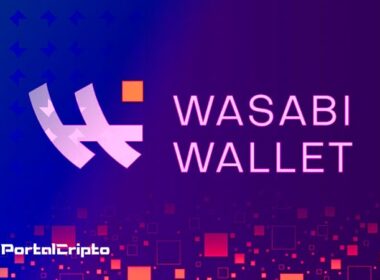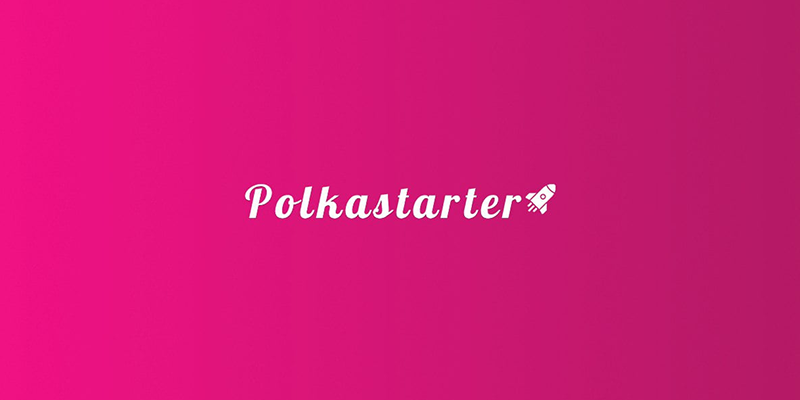Polkastarter is a new decentralized exchange built on Polkadot and intended to facilitate interoperability between different blockchains. It also includes a decentralized financial protocol that allows companies to raise capital through a cross-chain pool of tokens. The secure and decentralized environment ensures that funds remain safe.
In this article, we will discuss:
What is Polkastarter (POLS)?
Polkastarter is a Decentralized exchange (DEX) created based on the concepts of Decentralized Finance (DeFi). It has an infrastructure that allows different protocols to blockchain interact with each other in a decentralized way.
As this means that different blockchains have the ability to interact with each other, this opens up a wide range of features and benefits. Polkastarter was created from the Polkadot network.
With Polkastarter, any decentralized organization can easily raise capital through its DEX. They can list any token on the DEX for trading and can also use it to raise funds through a sealed auction or through a Dutch auction process.
One benefit of Polkastarter is that users can trade assets without being tied to any standard like ERC-20 or BEP-2. In addition, cross-chain exchanges take advantage of faster transaction processing times.
How Does Polkastarter (POLS) Work?
Polkastarter is expanding the fundraising space for encryption projects, allowing crowdfunding to take place. This benefits companies that use the ecosystem, but it can also allow buyers to benefit from discounts during the auction process. Users also have access to full KYC integration and in the future will have governance powered by a fully functional DAO.
The Polkastarter network outperforms similar projects in space because it promises all of the following features:
- Functions – Polkastarter uses fragmentation technology to allow easy switching between different blockchain protocols. This allows interoperability between blockchains so users can exchange any token from any network.
- Transaction speed – Transaction speed is an issue with many blockchains as their user base grows, but Polkastarter uses the Polkadot Network, which means that Polkastarter can easily process 160.000 transactions per second, with the ability to reach 1 million transactions per second if necessary.
- Governance – As the native POLS token is used to control any user who owns the token who can participate in the network ecosystem by voting on different types of auctions, token utility announcements and product feature changes / additions / deletions.
- Data Sharing – Cross-chain transactions are not all that is possible in Polkastarter. It also facilitates data sharing between protocols on different blockchain networks.
- Interoperable Pool Tokens – Polkastarter offers cheap transactions, secure ultra-fast exchanges, user-friendly design, and the ability to buy and move assets between blockchains in a user-friendly design usage.
How Polkastarter Handles Fixed Exchanges
The fixed swap pool in Polkastarter is the most notable component of the network. The team decided to use this architecture for their DEX because these fixed swap pools are able to withstand the price volatility commonly found in automated market creation. Fixed exchanges are also preferred for crowdfunding and fundraising in general, as they provide users with a much higher level of transparency.
Therefore, Polkastarter is using fixed swap pools instead of the automated market used by most decentralized exchanges. This approach helped Polkastarter overcome many of the challenges facing exchanges. Most notably, it combats artificial price inflation by private investors, who then sell their tokens. This helps to stabilize prices for new token offers.
Another benefit of fixed swap pools is that it ensures that tokens are distributed more evenly, while eliminating the risk of mat drag in liquidity pools. Where automated market generation uses a federated curve approach to pricing, Polkastarter has implemented a method that uses a fixed price when switching between tokens.
This allows additional parameters to be added to the system, such as setting the maximum amount an individual can contribute to a project. Furthermore, it is easier for developers to set additional parameters to ensure fairness and transparency for new token holders.
Three fixed trading advantages
- The number of tokens sold and the amount collected can be easily calculated.
- Investors are more evenly distributed demographically and geographically.
- Token holders can more easily purchase tokens at standard prices.
Why Polkastarter (POLS)?
While Polkastarter was still on the drawing board, the founders realized that a combination of interoperability, scalability, speed, governance and upgradeability would be required. Several options were explored, but the founders ended up choosing Polkadot based on a presentation by Gavin Wood on Substrate, which allows the creation of custom blockchains in a simple structure.
Polkadot also has all the features that Polkastarter considers essential. It has a combination of scalability and speed that popular blockchains like Bitcoin and Ethereum can only hope to achieve. It also has much lower fees when compared to these other blockchains.
Scalability in Polkadot is achieved through:
- Horizontal scalability in the form of parachains
- Vertical scalability through the GRANDPA consensus engine. GRANDPA allows parallel block processing (also known as asynchronous block formation)
Polkadot also provides Polkastarter with cross-chain switching through EVM compatibility combined with Web Assembly. It also allows value transfers between chains through Asset Bridges, which is very important for Polkastarter.
With Substrate, Polkadot provides a framework to efficiently build the blockchain Polkastarter. And the platform is interoperable with external blockchains via the Polkadot bridge, allowing parachains to communicate internally and externally.
With governance in Polkadot, you don't have to worry about the governance and scalability issues that other block chains face. Polkastarter will be able to use this governance mechanism to evolve over time based on the needs and desires of blockchain stakeholders.
What are the Fundamentals of the Polkastarter Project (POLS)?
Polkastarter was very successful in its early days as it provides a great way to integrate and interact between different blockchain protocols that were not implemented in many other projects.
With decentralized funding continuing to gain in popularity, there have been a number of new projects built on different blocks of blocks to provide a multitude of use cases. For example, the cases of borrowing, saving, borrowing and using stable currencies are extremely common in space.
With Polkastarter, users can interact with many different protocols, even if they were developed in blocks of different blocks. It is a unique platform that allows interoperability between blockchains.
This gives users the ability to easily exchange cross-chain tokens, converting from one token to another, regardless of which blockchain the token exists on. It's also fast and cheap thanks to the speed and low transaction fees imposed by the Polkadot network.
Initial DEX Offer
Since coming online, Polkastarter has been one of the most attractive platforms for DEX startup offers. While there are more and more places where projects can post their tokens, Polkastarter is developing an incredible track record of successful DEX services. It's really amazing to see successful projects being launched on Polkastarter in the last few months.
Some of the most successful projects include Maha DAO, Fire Protocol and Exeed Me. In addition, the PAID network was born out of Polkastarter and is now functioning as another successful encryption boot.
Polkastarter has even seen some of its token sale events sold out in seconds, and many token releases are oversigned by users. Overall, the launch of Polkastarter is giving investors some of the best initial returns in the industry. It's a bit like the early days of Binance Launchpad, where new projects were definitely overcrowded and hugely successful.
Note that project-to-project returns vary and the initial success seen by Polkastarter IDOs is by no means guaranteed to continue, but as of mid-February 2021 it remains a key pillar for initial launches.
Two very interesting projects coming to Polkastarter include SuperFarm and Kingdom.
- superfarm – This is a cross-chain DeFi protocol with non-fungible token capabilities. The release is scheduled for February 22nd and can be quite successful if the developers keep their promises.
- United – Unidos is a business platform for decentralized capital markets. Kingdom allows companies to seamlessly manage their cryptographic assets through an enterprise-grade platform with a suite of encryption and DeFi banking management tools.
Team behind the Polkastarter token
Daniel Stockhaus is the project's CEO and brings two decades of business experience to the project. Although he has extensive experience in marketing and online digital presence, he stands out for his lack of blockchain experience.
James Martins is the CTO of Polkastarter and is an experienced software developer with several successful projects and startups in his time.
There are also two consultants listed on the Polkastarter website. One of them is Danilo Carlucci , which was previously the Community Head (US and UK) on YouTube. He is currently an angel investor and listed as Polkastarter's marketing and ecosystem consultant.
the other is Matthew Dibb , also COO of Stack Funds, a Singapore-based platform that seeks to connect digital assets with traditional financial investors. Working with best-in-class partners, Stack offers a streamlined, secure and simple way to gain access to cryptocurrencies and digital assets.
Polkastarter Partnerships
There are many prominent partnerships that have been formed between Polkastarter and other blockchain projects, but two in particular stand out.
Polkastarter and covalent
Covalent provides a unified API to bring full transparency and visibility to assets across all blockchain networks. One of the use cases is getting complex details related to cryptographic wallets.
This function allows Polkastarter users to check the reliability of the token contract. Covalent gives users access to transaction volume, token contract verification and age, among other insights.
Polkastarter and DIA
The partnership with DIA (Decentralized Information Assets) provides distributed Oracles for the Polkastarter platform. This reliable and accurate information helps Polkastarter to issue warnings about the potential for large price overruns.
Other notable partnerships between Polkastarter and other projects include Moonbeam for cross-chain interoperability, Shyft for a whitelist solution, and Orion Protocol for automated liquidity delivery.
POLS token
The native token used in the Polkastarter ecosystem is the POLS token. It has a total supply of 100 million tokens and a circulating stock of 56,5 million tokens.
POLS Token Utility
POLS is used in the Polkastarter ecosystem as a utility token. Among its main uses are liquidity management, staking and mining.
- Governance: As a governance token, its holders can vote on important issues, such as protocol capabilities, and the token will be visible on the network. They can also vote on the network's fee structure; Transactions on the platform are settled in the native POLS currency. Eventually, the network will transition to a fully automated DAO governance structure.
- Stake: Tokens can be wagered to earn rewards for betting on different fronts. For example, it can be wagered for a pool bonus or for pool access. Note that stakeout of POLS for pool access is not a given, but is decided only by the creators of individual groups. That said, the pool access gamble option is ideal for providing major liquidity providers with private access to premium pools.
- Liquidity Mining: In addition, Polkastarter's native currency can be wagered to participate in liquidity mining. Rewards are distributed to institutions that provide liquidity in the secondary market, among other subsections.
POLS distribution
The POLS token is configured for distribution as follows:
- 15% for sale of seeds
- 5% for private sale
- 5% to the liquidity fund will provide liquidity for Uniswap and other exchanges
- 15% for ecosystem growth, including marketing, awareness, partnerships and exchange lists
- 10% for teams and mentors
- 10% for platform reservation
What is the Price Forecast for the Polkastarter cryptocurrency (POLS)?
The Polkastarter price is forecast to peak at $7.625 throughout 2022.
As early as 2023 according to our crypto price prediction index, Polkastarter (POLS) may reach a maximum level of $12.947, with the average trading price being $9.628.
In 2025 according to our crypto price prediction index, POLS should cross an average price level of $11.422, the minimum expected Polkastarter price at the end of the current year should be $12.618. Additionally, POLS can reach a maximum price level of $13.515.
Where to buy the POLS token?
The POLS cryptocurrency can be traded on the following exchanges:
- Binance
- Gate.io
- KuCoin
- Huobi Global
- Poloniex
- MEXC
Conclusion
Polkastarter set a higher standard for DEX projects through the use of fixed exchanges rather than automated market creation. Transparency and fairness have been added to DEX, and the funding aspects of DeFi are a welcome change for the better.
Polkastarter has made good decisions when creating partnerships to ensure that users can immediately notice when a project is suspicious. It's nice to have a DEX that doesn't slip.
Polkastarter got off to a great start and continues to deliver on its promises. The first early DEX services on the platform were extremely popular and successful, which is also a good sign of the project's longevity. If we can get details about the team in the coming months, it would be much appreciated. It would be nice to have a third-party security audit for smart contracts.
Disclaimer of Liability : PortaCripto is a news portal and does not provide any financial advice. PortaCripto's role is to inform the community about cryptocurrencies and what is happening in this space. Do your own due diligence before making any investments. PortaCripto will not be responsible for any loss of funds.











